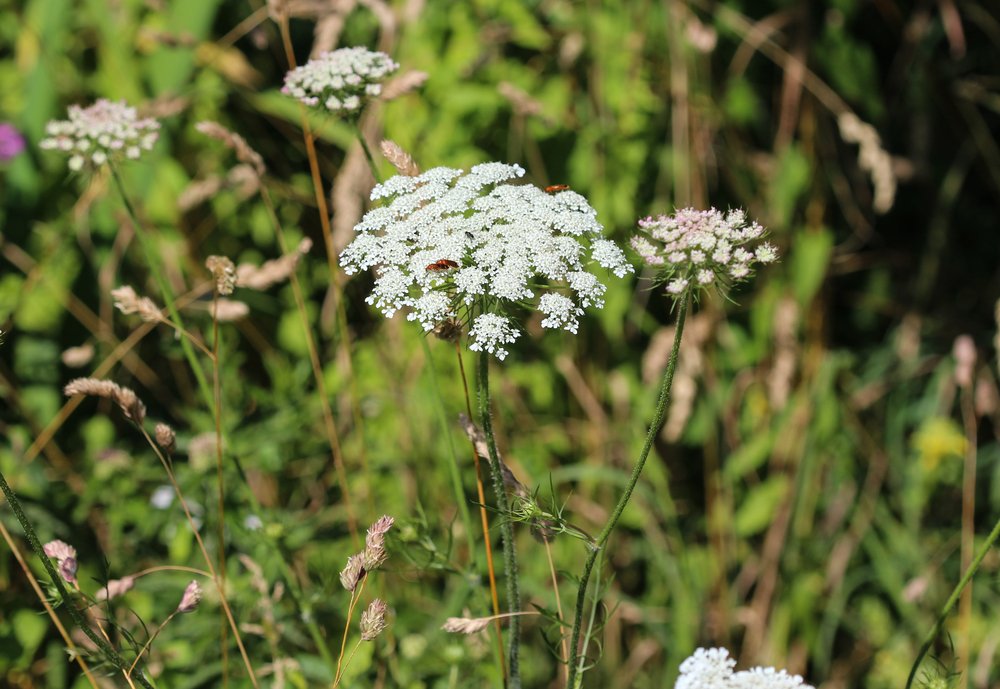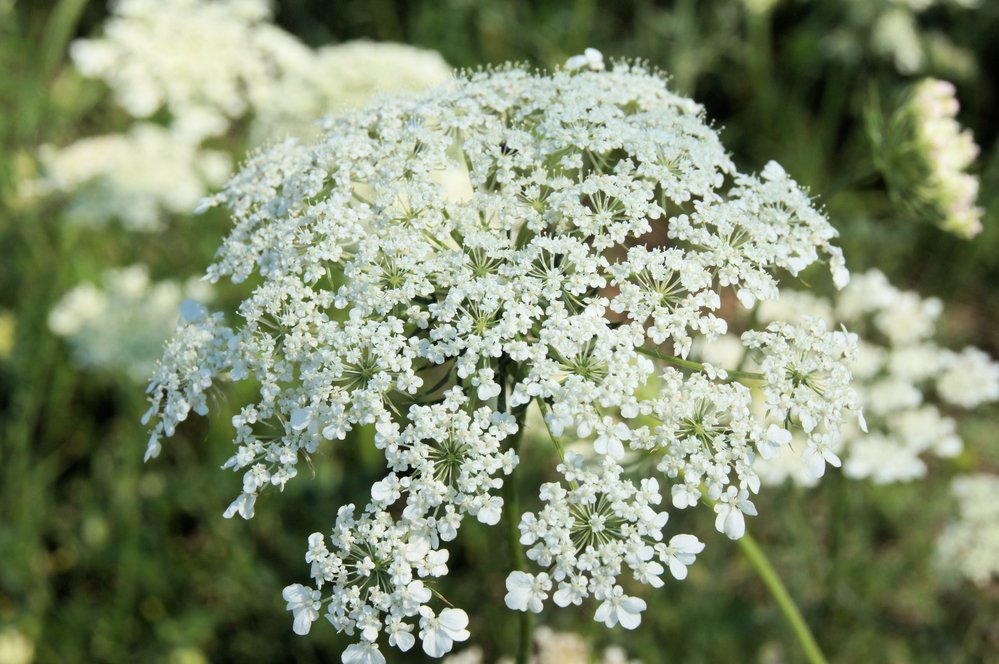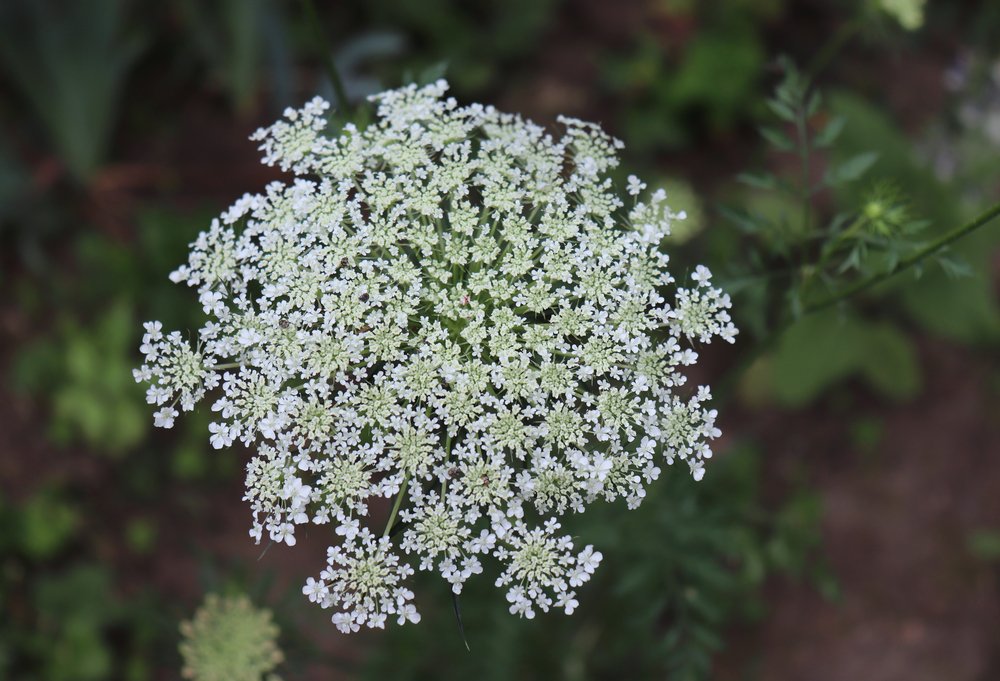A relative of the cultivated carrots we eat today, wild carrot (Daucus carota) is a perennial flowering plant of the Apiaceae family, which also contains coriander, cumin, and parsley.
The plant is native to the UK, where it has many other known common names, such as: Queen Anne’s lace, European wild carrot, bird’s nest, and bishop’s lace.
How To Identify Wild Carrot
Wild carrot is a biennial or, less commonly, a perennial wildflower. Like other members of the genus, it produces hairy, slender hollow stems that can grow up to 1.2 metres in height. The stems are surrounded by finely divided, tapering at the base.
The flowers of wild carrots are small and white, clustered in flat, dense umbels and grow in clusters that hide the leafy stem among their petals. These clusters typically contain a tiny purple or dark red flower in the centre of the white flowers.
The thin roots are very woody, twisted and tough, even in the young plants.

Wild Carrot Distribution
Wild carrot is native to most parts of Europe and North Africa but has been introduced to many countries worldwide, including North and South America and Far East Asia.

Where To Find Wild Carrot
Wild carrot is a very aggressive invasive species and will thrive in almost any type of soil and growing conditions. The plant grows under high humidity, mainly in coastal regions and along streams, rough grassland, meadows, cliffs, roadsides, and hedgerows.
The plant reproduces rapidly so that it can spread easily around a region. Its rapid growth is a problem in many parks and gardens, where it is considered an invasive species.

Is Queen Anne’s Lace Poisonous
Yes, parts of Queen Anne’s Lace are poisonous to humans, but not deadly or cause for serious concern.
Anyone suffering from allergies or skin conditions will be more vulnerable to the effects of the plant, which will cause itching and skin irritation. In other cases, it has been known to cause vomiting, abdominal pain, and diarrhoea.
According to the Missouri Poison Center, the roots are edible when the plant is young, though very bitter and untasty. It’s most often used as a flavouring, as opposed to food itself.
However, wild carrots can cause fatalities in livestock when consumed in large amounts.
It’s worth noting that wild carrot has a strikingly similar appearance to poison hemlock (Conium maculatum), also known as carrot fern and poison parsley, which is highly poisonous to humans and livestock.
Poison hemlock and wild carrot are difficult to tell apart by eye, but easily by nose. The root of wild carrot smells like carrots, whereas poison hemlock roots have an ill-smelling rancid odour.

Other Facts
- According to the Museum of Contraception and Abortion, wild carrot seeds are often ground or brewed as a tea and used as a herbal contraception or in higher doses, an alternative to the morning-after pill.
- The name Queen Anne’s Lace is thought to have derived from a time when Queen Anne of Great Britain (1665-1714) accidentally pricked her finger, causing blood to drip onto the white lace collar she was sewing at the time. The plant looks like fine lace at times, with a spec of blood (the red flower among the white umbels), hence the name.
- Another theory is that Franz Bauer, a botanical artist, named the species after Queen Anne, whose portrait he had seen in her garden with this flower in her hand.
Additional Resources
Sources and References
- (Daucus Carota) Wild Carrot – kew.org
- Wild Carrot – wildfooduk.com

Ash is a contributing author who has been writing about wildlife for as long as he can remember. He has a vast knowledge of many different types of animals, from the tiniest shrews to the great whales that live in the deepest oceans.
